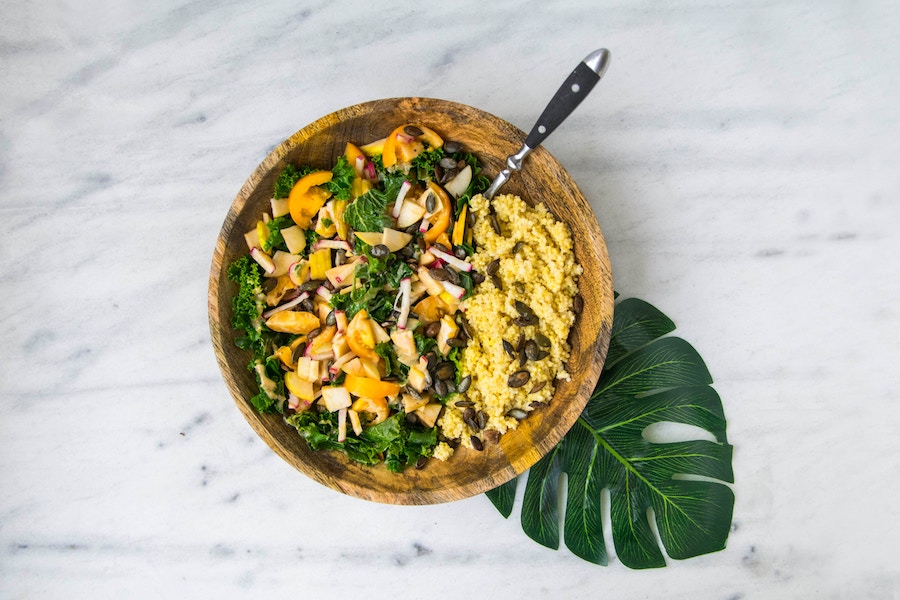By: Callie McBride

The food pyramid tells us which foods to load up on and which to enjoy sparingly; restaurants often contradict a nutritious dish with that classic side of fries. It seems that we are led to be confused by the food industry about nutritional balance, or lack thereof. How is one to really know that the steaming plate of roasted vegetables, doused with creamy cheese, isn’t actually the healthy option after all? And when a super, super-sized soft drink is offered for only 50 cents more, the trap becomes difficult to escape.
Enter the Macro Bowl, a dish that has recently made its way onto popular vegan restaurant menus and into raw food cookbooks. Imagine a large, colorful creation of nutritionally dense foods that combine to create a healthy powerhouse right before your eyes. Named after the high content of macronutrients that they contain, Macro Bowls typically feature steamed or raw greens, something fermented from the sea (seaweed, kimchee, wakame), brown rice or cooked quinoa, a root or steamed veggie, and a delicious dressing or side of avocado to top it off. Right there you’ll see protein, calcium, omega 3s, healthy fats, fiber, many vitamins and minerals, and best of all, easy digestion. They come in different varieties, but they are all extremely dense with macronutrients, or all of the necessary and essential components to a healthy diet. Just think, you can get an entire day’s worth of essential nutrients, all in a tightly packed and flavorful bowl!
Carbs, proteins, fats, macrominerals, and water are the players, and the game is ensuring that your body gets all of its macronutrients as much as possible. (Hence why fried green beans with cheesy sauce probably don’t count.) The Macro Bowl is designed to load up the body with all of these nutrients at once-yes please. I have had my fair share of macro bowls or plates in New York City-specifically Brooklyn’s Sun In Bloom and Cafe Blossom in the West Village- and I can attest that this is one nutritious overload not to miss. The best part is that there is no strict recipe to follow with exact measurements or lengthy cooking. The variety and color is completely up to you and your palate. So check out the recipes below for inspiration, grab a bowl, and say hello to your new favorite dish.

Sun in Bloom’s Hearty Macro Bowl:
Daily Green, Daily Bean, Steamed Collard Greens, Steamed Kale, Wakame, Daily Veggie, House Made Raw Sauerkraut, and Tempeh. Served with Sesame Ginger Dressing (suggestion of adding avocado)
Café Blossom’s Macro Salad:
Spiced Quinoa, Steamed Tofu, Kimchee, Kimpura Carrot, Raw Kale with Avocado and Lemon
Follow this simple formula and personalize it to create an at-home Macro Bowl:
- Greens (cooked or raw)
- Healthy whole grain (brown rice, quinoa, buckwheat, millet, etc)
- Plant protein (beans or organic tofu or tempeh)
- Seaweed or kimchee
- Seasonal raw veggies
- Cooked root veggie (sweet potato or squash)
- Avocado
- Yummy dressing (lemon+olive oil, Green Goddess, tahini, whatever floats your boat!)
Happy experimenting!














